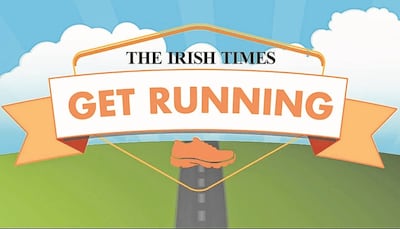When we first start running we dream of running without walk breaks. Every minute is a challenge. Our first 5km is the top of the mountain. We never imagine we may go beyond it. But once we reach those dizzy heights of 5km, training for a 10km or longer can seem a possibility. But just because it is possible doesn’t always mean it is the right thing to do.
The rush to run longer
I would encourage anyone who is new to running 5km to stick at that distance for at least six months before attempting to run longer. Enjoy running 5km. Don’t rush up the ladder of running distance milestones too quickly. Give your body time to adapt and enjoy the journey. Long distance can be in your future if you want it to be, but remember that running long distance doesn’t make you a better runner – it just makes you a long-distance runner.
Subtle peer pressure
We often compare our running accomplishments and potential to that of our peers. If your friends are training for a 10km, you may feel like your 5km training (that you once considered amazing) is not that impressive. Many times I have heard runners say they are “only” training for a half-marathon, feeling inferior to friends who are training for a marathon. Our running buddies and clubmates can be our greatest motivators and supporters but we need to remember that our perception of what a “long run” is can change over time as we spend more time around other runners.
The labels we give ourselves
Running isn’t linear and there are many paths we can take. We can indeed run longer but that is not the only way to progress. What type of a runner are you? You might see yourself as a sprinter, a weekend park runner or a long-distance runner. You may even have set limitations on how far (or fast) you believe you can run. It can be very easy to pigeonhole ourselves. Doing what we have always done feels comfortable. But the best thing about running is there is always somewhere new to go if we are in search of a new challenge.
What do you really want?
It is easy to get carried along by what our running buddies are aiming for. Just because you completed a half-marathon doesn’t mean you should take on a marathon next. Just because you always run long distance shouldn’t stop you giving shorter distances another try. Some people thrive on long steady runs, while others much prefer a short fast loop around the block on their lunchbreak. What we enjoy changes over time too. The only way to find out what works for you is to set new challenges, experiment with your training by gradually adapting what you do.
What is your perfect distance?
If you are very lucky, you may have already found your sweet spot, that lovely distance that gives you the buzz of running with the right balance of training, challenge and commitment. Throughout my 30s I loved nothing more than training for marathons and taking on some ultra-marathon adventures. I had time, motivation and the freedom to make my own schedule and prioritise the logistics and added self-care that long distance involves. Ten years on and I’m much more content without the pressure of a long-distance race in the diary. I’m sure it will change again in the future but for now running shorter distances is sustainable, practical, enjoyable and rewarding for me.
When to change up distance
Keeping a passion for running is one clear way of staying motivated so if your current training plan is not inspiring, look around for other options. If you are bored, change your distance goal and aim for something you have never done before. Alternatively, your training is feeling overwhelming and you risk injury or burnout, now might be a time to step back on the intensity. Do not be afraid to listen to your body. It can be hard to step away from what we have always done and face the unknown. But as runners our identity is a lot more than just the distance we choose to run. We are still be a runner even if we are on a new learning curve.
How far should I go?
I could list the perks of running both longer and shorter distances as well as their shortcomings, but the purpose of these words is to encourage you to consider something different than you might have considered before. The biggest challenge for most of us is our mindset. With the right training we could do what we now think is impossible. You have done it before. Naturally the longer you run the more you have to respect the impact on your body and build in the time to balance the miles with recovery, rest and cross training. The rewards can be great, but the time involved is not to be underestimated. Whatever path you decide to take, make sure you do your research and follow a plan that fits in with your lifestyle.
The perfect running distance
There is no perfect running distance – but there is the perfect distance goal that will suit you over the next few months. If you can set out this spring excited about what lies ahead, you are much more likely to stay focussed, optimistic and dedicated to your training. What worked for you last year might not work now, so be realistic as well as open-minded as to where your running could take you this spring. Everything is possible if you take it step by step. You never know where you might end up if you veer off your usual path.

Sign up for one of The Irish Times' Get Running programmes (it is free!).
First, pick the eight-week programme that suits you.
- Beginner Course: A course to take you from inactivity to running for 30 minutes.
- Stay On Track: For those who can squeeze in a run a few times a week.
- 10km Course: Designed for those who want to move up to the 10km mark.
Best of luck!
Mary Jennings is founder and running coach with forgetthegym.ie. Her spring running coaching programmes in Dublin and online start this week














